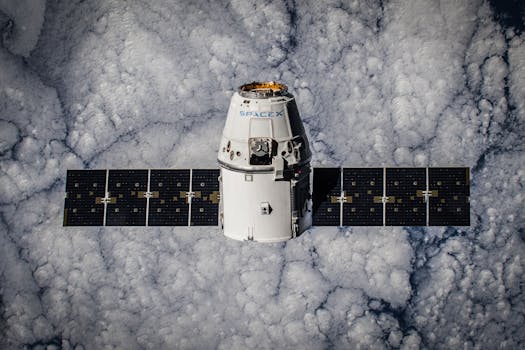
The Future of Satellites: Revolutionizing Global Communication and Exploration
Future of satellites is an exciting and rapidly evolving field, with advancements in technology and innovation paving the way for a new era in space-based services. The future of satellites is poised to revolutionize global communication and exploration, enabling new opportunities for scientific research, commercial development, and societal benefit. With the increasing demand for satellite-based services, the industry is expected to grow significantly in the coming years, with estimates suggesting that the global satellite market will reach $1 trillion by 2025.
The development of new satellite technologies, such as small satellites, satellite constellations, and advanced propulsion systems, is driving innovation in the industry. Small satellites, in particular, are becoming increasingly popular due to their lower cost and increased efficiency, enabling new opportunities for startups and entrepreneurs to enter the market. Satellite constellations, on the other hand, are being developed to provide global coverage and high-speed connectivity, with companies such as SpaceX and OneWeb leading the charge.
Advancements in Satellite Technology
Advancements in satellite technology are driving the future of the industry, with innovations in materials, propulsion systems, and communication equipment enabling new opportunities for satellite-based services. The development of new materials, such as advanced composites and 3D printing, is enabling the creation of lighter and more efficient satellites, while advancements in propulsion systems are improving the maneuverability and lifespan of satellites. Communication equipment, such as antennas and transceivers, is also being improved, enabling higher speeds and greater connectivity.
The use of artificial intelligence and machine learning is also being explored in the satellite industry, with applications in areas such as satellite operations, data analysis, and cybersecurity. AI and ML can be used to optimize satellite performance, predict and prevent failures, and improve the overall efficiency of satellite-based services. Additionally, the use of blockchain technology is being explored, with applications in areas such as satellite data management and secure communication.
Applications of Satellites
Satellites have a wide range of applications, from communication and navigation to scientific research and exploration. Communication satellites, such as geostationary satellites and satellite constellations, provide global coverage and high-speed connectivity, enabling new opportunities for remote communication and data transfer. Navigation satellites, such as GPS and Galileo, provide location information and timing signals, enabling accurate navigation and positioning.
Scientific research satellites, such as the Hubble Space Telescope and the Kepler Space Telescope, are used to study the universe and make new discoveries. Exploration satellites, such as the Mars Curiosity Rover and the Europa Clipper, are used to explore new worlds and search for life beyond Earth. Additionally, satellites are being used for Earth observation, providing valuable data on the environment, climate, and natural resources.
Challenges and Opportunities
Despite the many opportunities presented by the future of satellites, there are also challenges that must be addressed. One of the biggest challenges is the issue of space debris, with thousands of pieces of junk orbiting the Earth and posing a threat to operational satellites. The development of new technologies and regulations is needed to address this issue and ensure the long-term sustainability of space-based services.
Another challenge is the issue of cybersecurity, with satellites being vulnerable to hacking and other forms of cyberattack. The use of advanced security measures, such as encryption and firewalls, is needed to protect satellite-based services and prevent cyber threats. Additionally, the issue of spectrum management must be addressed, with the increasing demand for satellite-based services posing a challenge to the limited availability of radio spectrum.
Conclusion
In conclusion, the future of satellites is poised to revolutionize global communication and exploration, with advancements in technology and innovation paving the way for a new era in space-based services. The development of new satellite technologies, such as small satellites and satellite constellations, is driving innovation in the industry, while advancements in materials, propulsion systems, and communication equipment are enabling new opportunities for satellite-based services. Despite the challenges that must be addressed, the future of satellites is exciting and full of opportunities, with the potential to transform the way we communicate, navigate, and explore the universe.






